CH 11 Understanding Unemployment and Labor Force Participation
1/76
There's no tags or description
Looks like no tags are added yet.
Name | Mastery | Learn | Test | Matching | Spaced |
|---|
No study sessions yet.
77 Terms
Unemployed workers
Adults who do not have a job, but who are looking for work.
Unemployment rate
The percentage of the labor force without a job.
Labor force participation rate
The percentage of adults in the labor force.
Discouraged workers
Workers who have given up looking for work but who would still like a job.
Criteria for being counted as unemployed
To be counted as unemployed, a person must be 16 years or older, not institutionalized, a civilian, and looking for work.
Labor force
The sum of employed and unemployed individuals.
Unemployment rate formula
Unemployment rate % = (Unemployed / (Unemployed + Employed)) × 100.
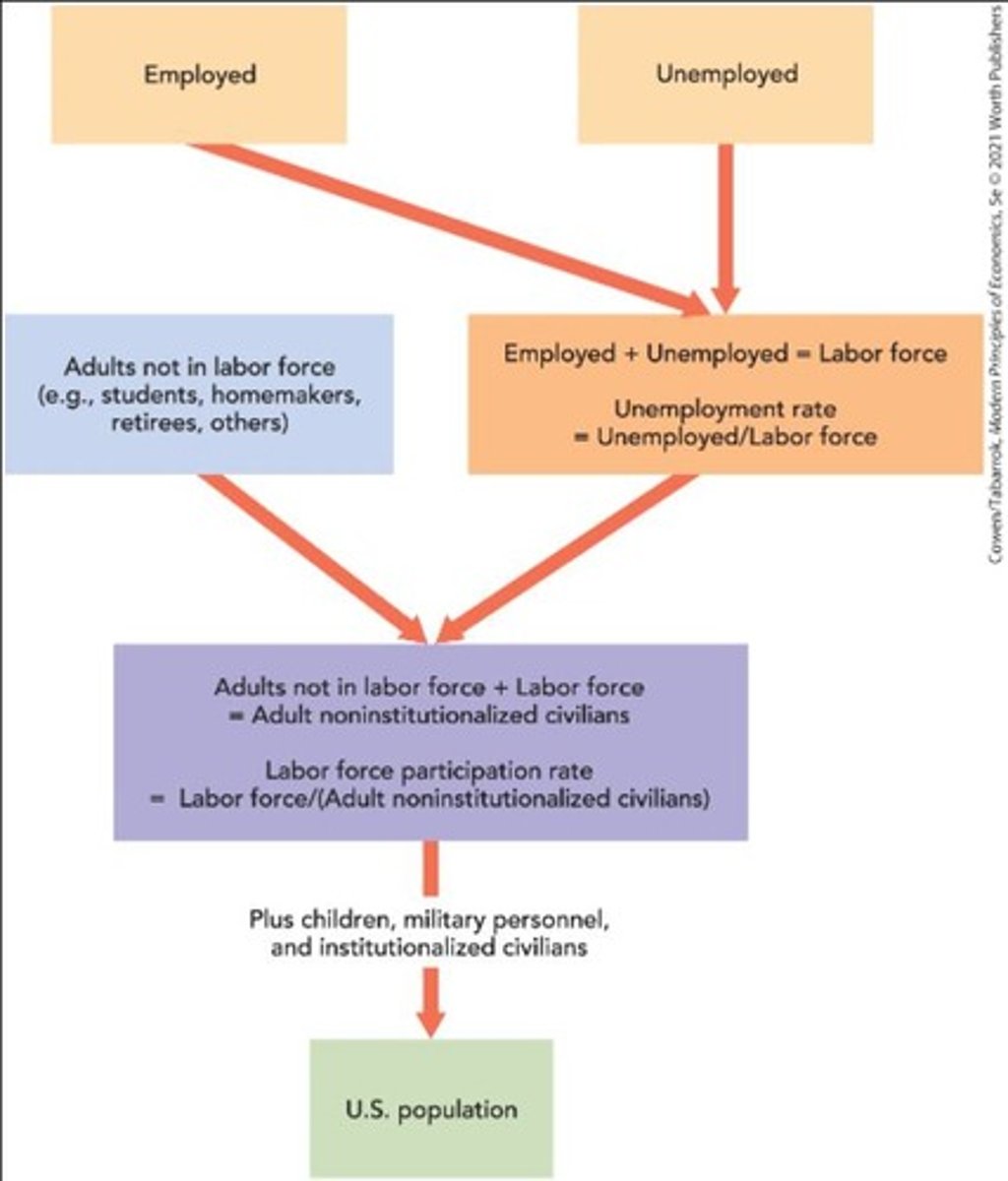
November 2022 unemployment statistics
In November 2022, 6.0 million people were unemployed and 158.5 million were employed, making a labor force of 164.5 million.
Example of unemployment rate calculation
If 2 million people are unemployed and 8 million are employed, the unemployment rate is [2 / (2 + 8)] × 100 = 20%.
Impact of long-term unemployment
Unemployment, especially if it is long term, can be financially and psychologically devastating.
Indicator of labor market performance
The unemployment rate is the single best indicator of how well the labor market is working, but it is an incomplete indicator.
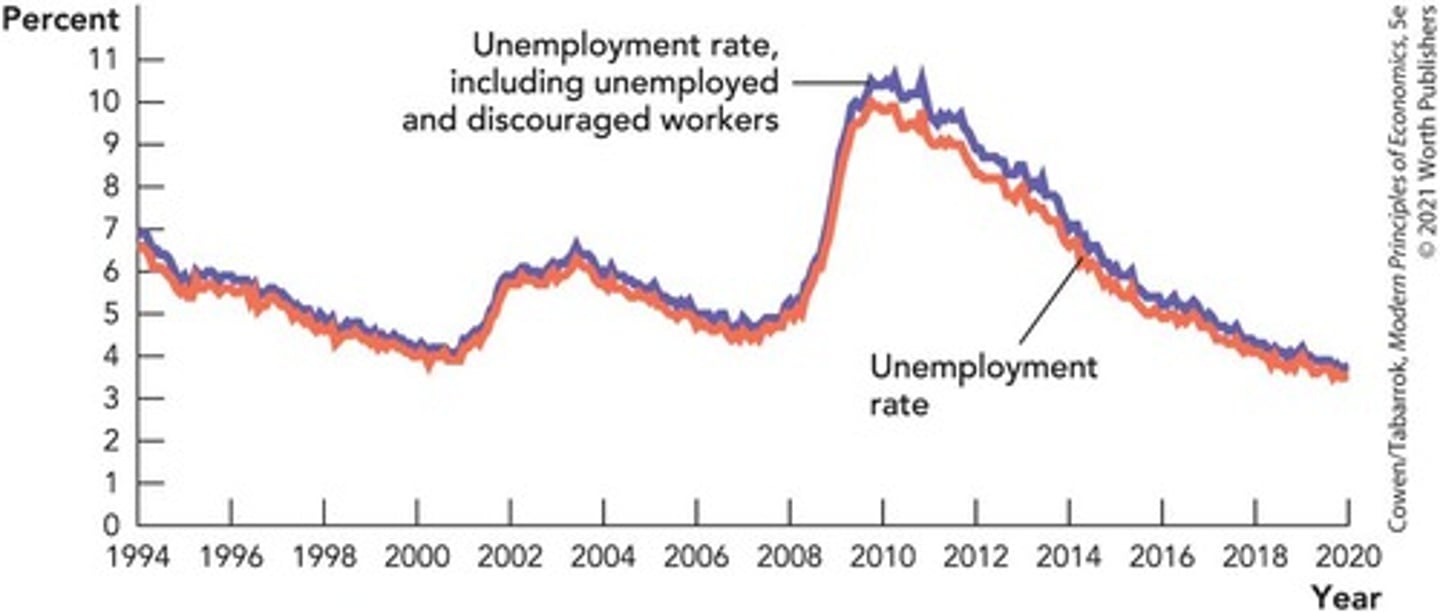
Discouraged workers definition
Workers who want and are available for work, and who have looked for a job sometime in the last year but not in the last month because they believe that no jobs were available for them.
Underemployment rate
A Bureau of Labor Statistics measure that includes part-time workers who would rather have a full-time position and people who would like to work but have given up looking for a job.
Underemployment
The unemployment rate also doesn't measure the quality of the jobs or how well workers are matched to their jobs.
Frictional unemployment
Short-term unemployment caused by the ordinary difficulties of matching employee to employer.
Structural unemployment
Persistent, long-term unemployment caused by long-lasting shocks or permanent features of an economy that make it more difficult for some workers to find jobs.
Frictional unemployment causes
Scarcity of information is one of the causes of frictional unemployment.
Dynamic economy
Frictional unemployment is typically a large share of total unemployment because the U.S. economy is dynamic.
Creative destruction
Innovation and competition drive progress, which creates new jobs and destroys old jobs.
Job creation and separations (July 2021)
In July 2021, 6.5 million new jobs were created, but there were also 5.8 million job separations, for a total of 700,000 new jobs.
Causes of structural unemployment
One cause of structural unemployment is large, economy-wide shocks such as oil shocks.
Costs of structural unemployment
Structural unemployment has significant costs: Loss of economic output, higher levels of stress, higher rates of suicide, and lower rates of measured happiness.
Structural unemployment in Europe
Structural unemployment has been a more serious problem in Europe than in the United States because of labor regulations.
Labor regulations in Europe
Unemployment benefits, minimum wages, unions, and employment protection laws benefit workers.
Impact of regulations on unemployment
All of these regulations are more generous and wide-ranging in Europe, but the regulations can increase unemployment rates.
Self-Check: Underemployment
If you have a PhD in physics and are working as a retail clerk, you are underemployed.
Self-Check: Cause of structural unemployment
One cause of structural unemployment is a large, economy-wide shock.
Long-term unemployment (2007-2009)
One of the most worrying aspects of the 2007-2009 recession was the increase in long-term unemployment.
Job matching difficulties
Finding a job that you want at a wage that you will accept and that the employer will pay takes time.
Underemployment example
A taxi driver with a PhD in chemistry is counted as fully employed; so is a part-time worker.
Measuring partial employment
Defining and measuring partial employment is difficult.
Underemployment rate (November 2022)
As of November 2022, the underemployment rate in the United States was 6.7%.
Self-Check: Frictional unemployment
Frictional unemployment is caused by the ordinary difficulties of matching employee to employer.
Self-Check: Structural unemployment causes
One cause of structural unemployment is a large, economy-wide shock.
Structural Unemployment
One cause of structural unemployment is a large, economy-wide shock.
Unemployment Benefits
Unemployment benefits are the most obvious labor regulation that can increase unemployment rates.
Unemployment Insurance
Unemployment benefits include unemployment insurance, but also other benefits such as housing assistance in some countries.
Unemployment Replacement Rate in France
In France, the first year of unemployment, 80% of the worker's income is replaced.
Unemployment Replacement Rate in the United States
In the United States, only 38% of a worker's pay is replaced.
Duration of Unemployment Benefits
Unemployment benefits also last much longer in Europe than in the United States.
Minimum Wage in Western Europe
Both minimum wages and median wages have been higher in Western Europe than in the United States.
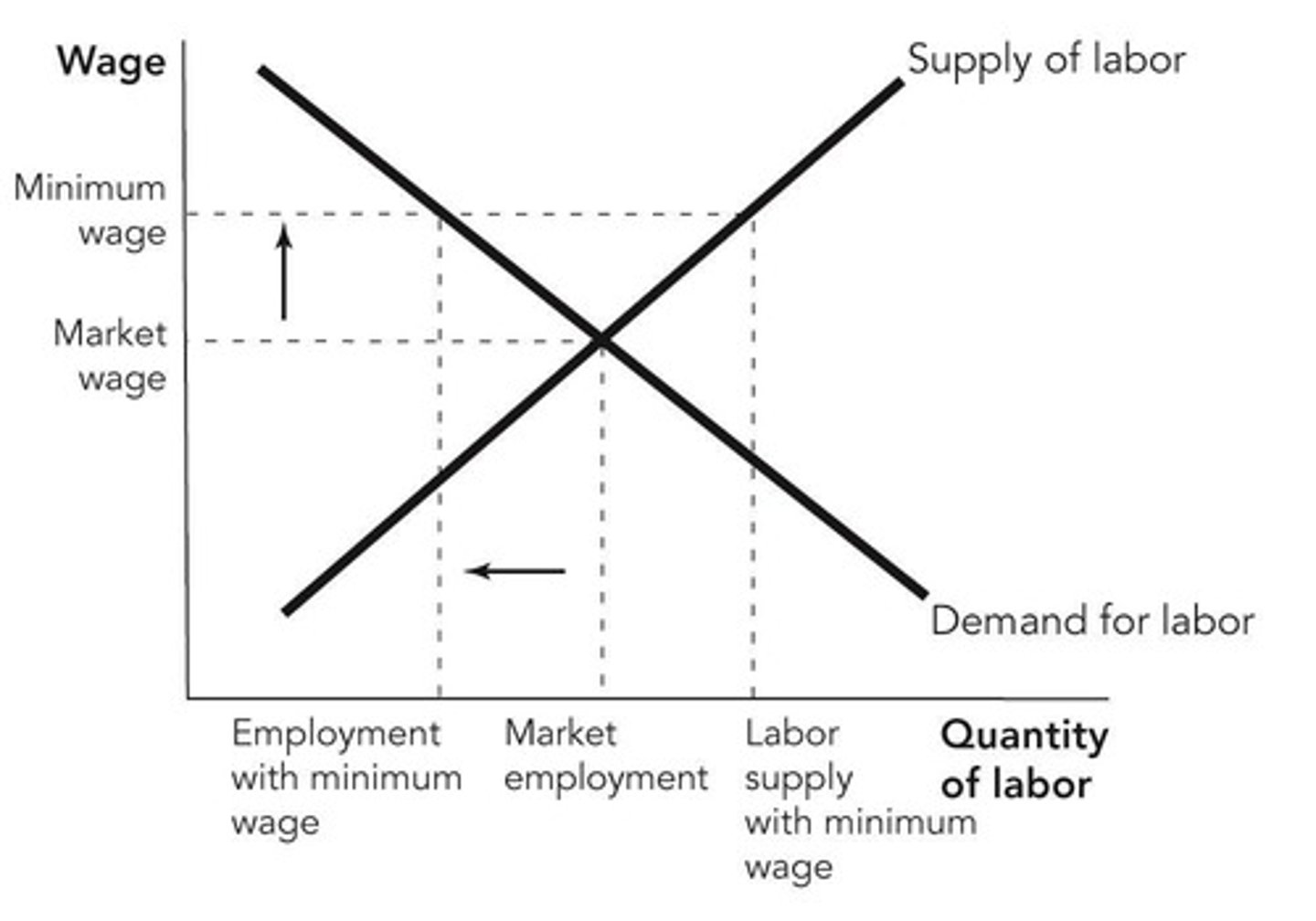
Minimum Wage Impact on Employment
The minimum wage will affect more workers and create more unemployment in Europe than in the United States.

Minimum Wage and Young Workers
The minimum wage is also more likely to create unemployment among young workers.
Youth Unemployment Rate in France (2021)
In 2021, in France, 18.2% of workers younger than the age of 25 were unemployed.
Youth Unemployment Rate in the United States (2021)
In the United States, 8.2% of these workers were unemployed.
Union
An association of workers that bargains collectively with employers over wages, benefits, and working conditions.
Value of Unions
Unions can provide value for workers and employers alike.
Strong Unions
Excessively strong unions have an effect similar to minimum wages.
Union Power Comparison
Unions are more powerful in Europe than in the United States.
Employment at-will Doctrine
An employee may quit and an employer may fire an employee at any time and for any reason.
Effects of Employment Protection Laws
Employment protection laws create valuable insurance for workers with full-time jobs, make labor markets less flexible and dynamic, increase the duration of unemployment, and increase unemployment rates among young, minority, or otherwise 'riskier' workers.
Hiring and Firing Costs
Hiring and firing costs increase long-term unemployment.
Termination under Employment at-will Doctrine
The employment at-will doctrine says that employment can be terminated at any time for any reason.
Active Labor Market Policies
Policies such as work tests, job search assistance, and job retraining programs that focus on getting unemployed workers back to work.
Structural Unemployment
Unemployment resulting from large, long-lasting shocks that require the economy to restructure.
Factors increasing Structural Unemployment
Oil shocks, shifts from manufacturing to services, globalization, and technology shocks.
Labor regulations
Unemployment benefits, minimum wages, powerful unions, and employment protection laws.
Factors reducing Structural Unemployment
Active labor market policies such as job retraining, job-search assistance, work tests, and early employment bonuses.
Cyclical Unemployment
Unemployment correlated with the business cycle.
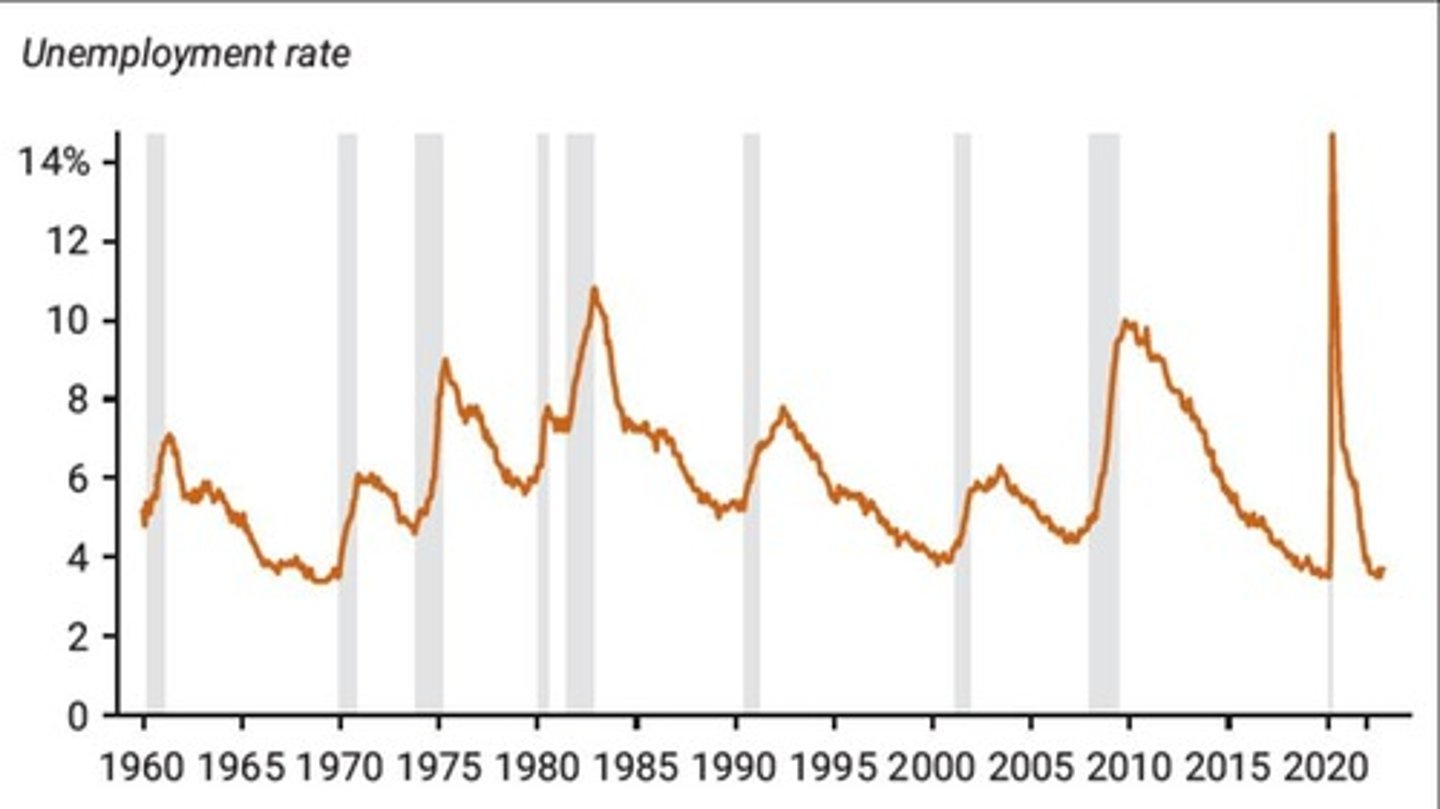
Reasons for increased Cyclical Unemployment during a recession
1. When GDP is falling, firms often lay off workers, which increases unemployment. 2. Idle labor and idle capital hurt the economy's ability to create more jobs.
Keynesian economists' view on Cyclical Unemployment
Cyclical unemployment is caused by deficiencies in aggregate demand.
Effect of faster growth in real GDP
Decreases unemployment.
Correlation of Cyclical Unemployment
Cyclical unemployment is correlated with the business cycle.
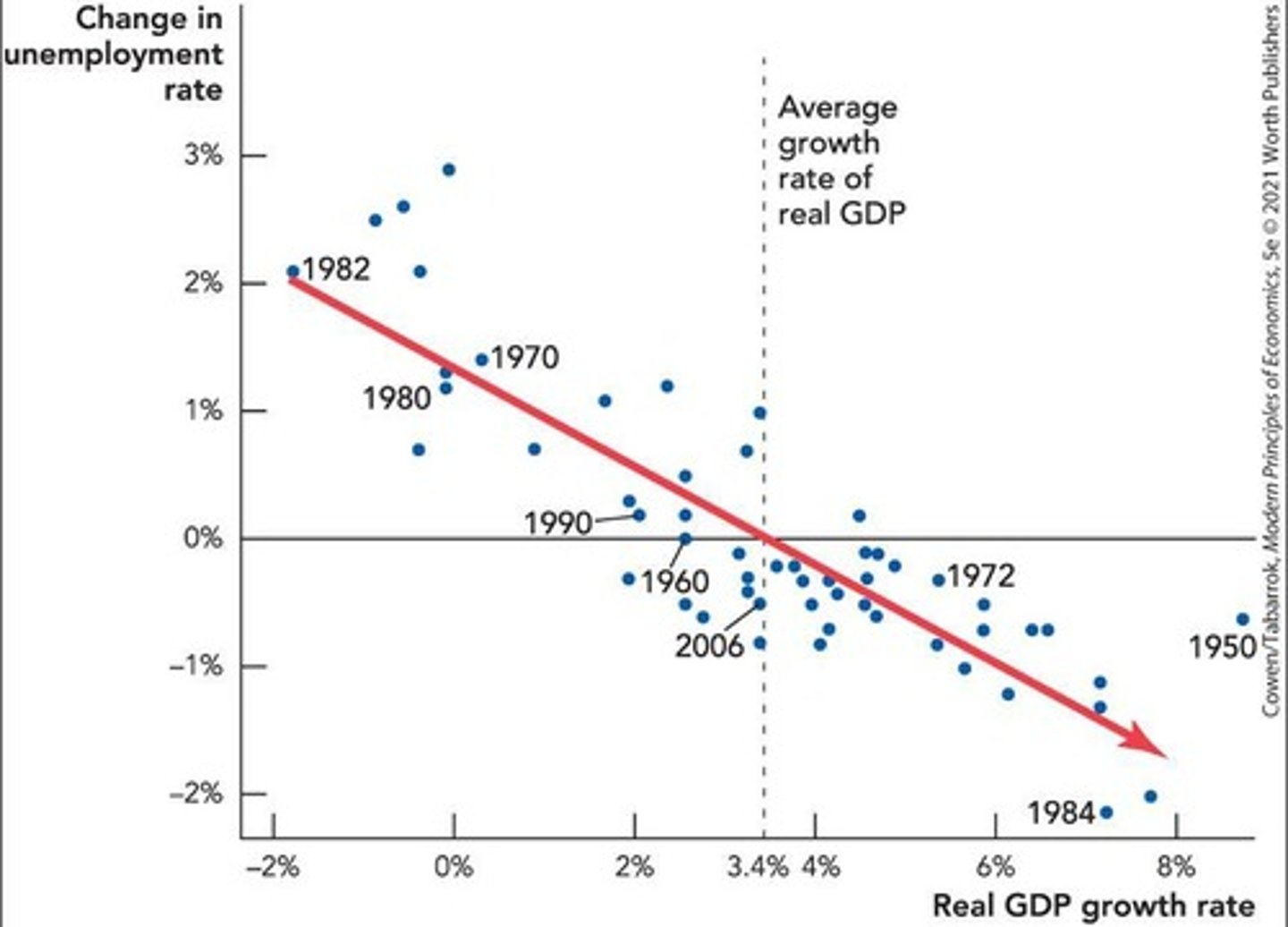
Natural Unemployment Rate
The rate of structural plus frictional unemployment.

Change in Natural Unemployment Rate
The underlying rates of frictional and structural unemployment change only slowly through time.
Labor Force Participation Rate (LFPR)
The percentage of the adult, noninstitutionalized, civilian population who are working or actively looking for work.

LFPR Formula
LFPR = (Unemployed + Employed) / Labor force × 100.
LFPR Example (2022)
In 2022, the labor force participation rate was 62.1%.
Labor Force Participation by Age (16-19)
34%.
Labor Force Participation by Age (25-54)
80.9%.
Labor Force Participation by Age (65+)
18.6%.
Impact of Taxes and Benefits on Labor Force Participation
Taxes discourage work, while benefits encourage nonwork.
Factors affecting Labor Force Participation
Lifecycle effects and demographics.
Self-Check on Labor Force Participation
Labor force participation is affected by lifecycle effects and demographics.
Takeaway on Unemployment
Know how unemployment, the unemployment rate, and the labor force participation rate are defined and calculated.
Takeaway on Types of Unemployment
Be able to define frictional, structural, and cyclical unemployment.
Takeaway on Labor Force Participation Factors
Know about the factors that increase or decrease the labor force participation rate.